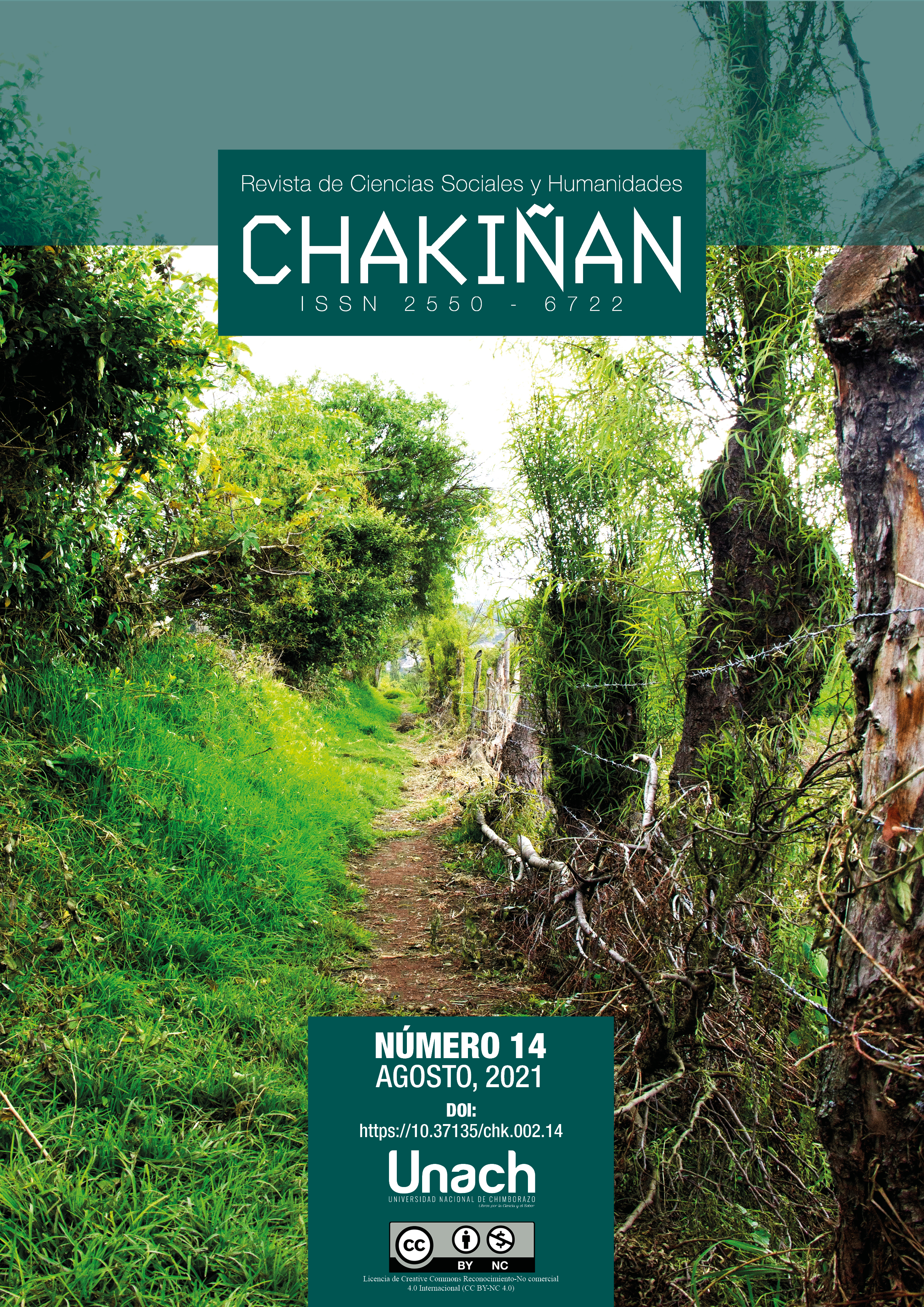THE ARGUEDIAN POETICS IN LA AGONÍA DE RASU ÑITI: FROM THE ANDEAN WORLDVIEW TO THE ETHICAL TURN
Main Article Content
Abstract
The study of Peruvian indigenous, especially José María Arguedas' work, became an important topic in the last decade after the commemoration of the centenary of this author's birth. In this study, the tale La agonía de Rasu Ñiti is mainly analyzed and interpreted, and study links are also established with other works by José María Arguedas himself. The research method was interpretative-hermeneutic. It is proposed that in La agonía de Rasu Ñiti the logic of the imaginary is constituted from the Andean cosmovision since it creates a web of signifiers with meaning in itself to manage to resuscitate the symbolic from the Andean cosmovision from the same approach of the narrator of the tale. This interpretation is based on the projection of the radical and transcendent inversion of social hierarchies in the real world, configuring the ethical turn from the substrate of a world represented by the Andean cosmovision approach.
Downloads
Article Details
Conference Proceedings Volume
Section

This work is licensed under a Creative Commons Attribution-NonCommercial 4.0 International License.
Responsibility of the authors:
The authors are responsible for the ideas and data collected in the manuscripts. They are additionally accountable for the fidelity of the information, the correction of the citations, the right to publish any material included in the text, and the presentation of the manuscript in the format required by the Journal (WORD template). A manuscript forwarded to CHAKIÑAN must not have been published before, nor must it have been submitted to another means of publication.
Copyright:
Published articles do not necessarily compromise the viewpoint of the CHAKIÑAN JOURNAL. The Journal is aligned to the policy of the licence de Creative Commons Reconocimiento-No comercial 4.0 Internacional (CC BY-NC 4.0). Each author retains the right to the paper published in the Chakiñan journal.
Privacy statement
The personal data and email addresses entered in this magazine will be used exclusively for the purposes stated by the publication and will not be available for any other purpose or person.
How to Cite
Share
References
Ansión, J. (1987). Desde el rincón de los muertos. El pensamiento mítico en Ayacucho. Lima, Perú: Gredes.
Aranda, G., López, M. y Salinas, S. (2009). Del regreso del Inca a Sendero Luminoso. Violencia y política mesiánica en Perú. Santiago de Chile, Chile: RIL editores.
Arguedas, J. (2004). Diamantes y pedernales. Relatos escogidos. Bogotá, Colombia: Horizonte y Norma.
Ayuque, J. (1976). El wamani en la “Agonía de Rasu-Ñiti”. En J. Larco (ed.), Recopilación de textos sobre José María
Arguedas (pp. 197-208). La Habana, Cuba: Ediciones Casa de las Américas.
Campo, L. (2008). Diccionario básico de Antropología. Quito, Ecuador: Abya-Yala. Recuperado de dspace.ups.edu.ec/bitstream/123456789/5692/1/Diccionario%20basico%20de%20antropologia.pdf
Cornejo, A. (1973). Los universos narrativos de José María Arguedas. Buenos Aires, Argentina: Losada.
Depaz, Z. (2015). La cosmo-visión andina en el Manuscrito de Huarochirí. Lima, Perú: Ediciones Vicio Perpetuo/ Vicio Perfecto.
Del Mastro, C. (2011). Golpear como un río la conciencia del lector José María Arguedas y la teología de la liberación. Páginas, 36(223), 38-49.
García-Bedoya, C. (2019). Hermenéutica literaria. Una introducción al análisis de textos narrativos y poéticos. Lima, Perú: Cátedra Vallejo.
Gutiérrez, G. (2008). Heterogeneidad e Ilustración: la poética en tres novelas de Pablo de Olavide (tesis de grado). Universidad Nacional Mayor de San Marcos, Perú. Recuperado de cybertesis.unmsm.edu.pe/bitstream/handle/20.500.12672/5975/Gutierrez_cg.pdf?sequence=1&isAllowed=y
Larrú, M. y Viera, S. (2011). Animales del aire, de la tierra y del subsuelo en la obra literaria de J. M. Arguedas. Boletín de la Academia Peruana de la Lengua, 52(52), 91-122. Recuperado de revistas.apl.org.pe/index.php/boletinapl/article/view/76/52
Navarrete, F. (2004). ¿Dónde queda el pasado? Reflexiones sobre los cronotopos históricos. En V. Guedea (ed.). El historiador frente a la historia. El tiempo en Mesoamérica (pp. 29-52). Ciudad de México, México: UNAM. Recuperado de http://www.historicas.unam.mx/publicaciones/publicadigital/libros/428/428_04_03_ElPasado.pdf
Pinilla, C. (ed.). (2004). José María Arguedas. ¡Kachkaniraqmi! ¡Sigo siendo! Textos esenciales. Lima, Perú: Fondo Editorial del Congreso del Perú.
Rancière, J. (2005). El viraje ético de la estética y la política. Santiago de Chile, Chile: Palinodia.
Rivera, F. (2011). Dar la palabra. Ética, política y poética de la escritura en Arguedas. Madrid, España: Iberoamericana-Vervuert.
Rowe, W. (1996). Ensayos arguedianos. Lima, Perú: Centro de Producción Editorial de la Universidad Nacional Mayor de San Marcos – SUR Casa de estudios del Socialismo.
Ubilluz, J. (2014). La teología política de José María Arguedas. En R. Cuenca y R. Pajuelo (ed.), Arguedas. El Perú y las ciencias sociales. Nuevas lecturas (pp. 31-71). Lima, Perú: Instituto de Estudios Peruanos.






